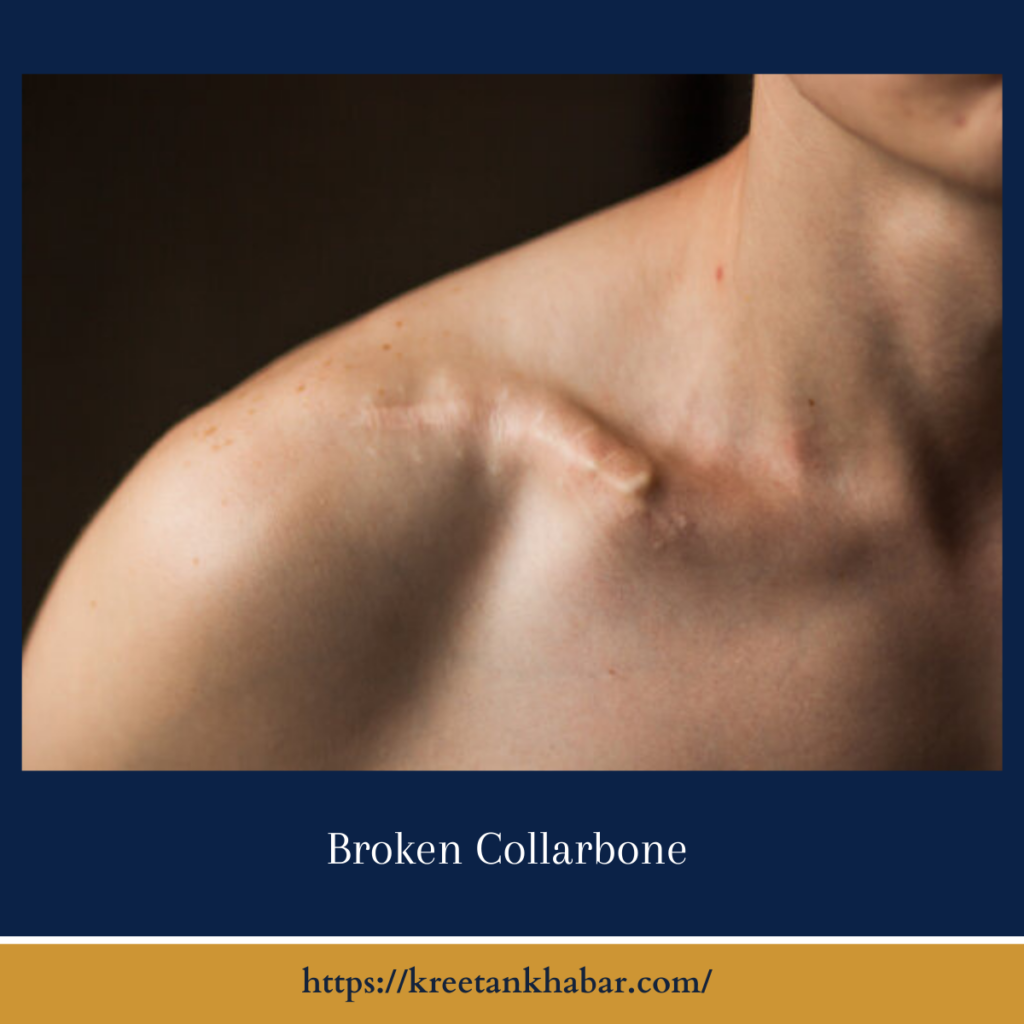Broken Collarbone: Causes, Symptoms, and Treatment
A broken collarbone, medically known as a clavicle fracture, is a common injury that can occur due to various reasons. Understanding the causes, symptoms, and treatment options for a broken collarbone is essential for prompt diagnosis and effective management of this injury. Let’s delve into the details to gain a comprehensive understanding.

Causes of a Broken Collarbone
The collarbone is susceptible to fractures due to its location and function. Common causes of a broken collarbone include:
- Direct Impact: A fall onto the shoulder or a direct blow to the collarbone, such as during a sports-related collision or a vehicle accident, can cause a fracture.
- Overuse or Repetitive Stress: Athletes engaged in activities that involve repetitive arm movements, such as throwing or weightlifting, may develop stress fractures in the collarbone over time.
- Birth Trauma: In newborns, the collarbone may fracture during delivery if there is difficulty passing through the birth canal.
Recognizing the Symptoms
Symptoms of a broken collarbone may include:
- Pain: Immediate pain at the site of the fracture, which may worsen with movement.
- Swelling: Swelling and tenderness around the collarbone area.
- Bruising: Bruising or discoloration over the collarbone or surrounding area.
- Visible Deformity: In some cases, a visible deformity or bump may be noticeable at the site of the fracture.
- Difficulty Moving Arm: Limited range of motion in the affected arm, especially when lifting or rotating the shoulder.
Treatment Options
Treatment for a broken collarbone depends on the severity of the fracture and may include:
- Immobilization: For less severe fractures, wearing a sling or brace to immobilize the arm and shoulder may be sufficient for healing.
- Medication: Over-the-counter pain relievers may help manage pain and inflammation during the healing process.
- Physical Therapy: Once the fracture begins to heal, gentle exercises and physical therapy can help restore strength and range of motion in the shoulder.
- Surgery: In severe cases where the bones are significantly displaced or fragmented, surgery may be necessary to realign the bones and stabilize the fracture with plates, screws, or pins.
Recovery and Rehabilitation
Recovery from a broken collarbone typically takes several weeks to months, depending on the severity of the fracture and the individual’s overall health. During this time, following the prescribed treatment plan, including rest, immobilization, and rehabilitation exercises, is crucial for optimal healing and recovery of shoulder function.
- Immobilization Phase: Initially, the injured arm may be immobilized using a sling or brace to prevent further injury and promote bone healing. It’s important to follow the healthcare provider’s instructions regarding wearing the sling or brace and limiting movement.
- Pain Management: Over-the-counter pain relievers may be recommended to manage discomfort during the early stages of recovery. It’s essential to adhere to the prescribed dosage and consult a healthcare provider if pain persists or worsens.
- Gradual Range of Motion Exercises: As healing progresses, gentle range of motion exercises prescribed by a physical therapist or healthcare provider can help prevent stiffness and improve flexibility in the shoulder joint. These exercises should be performed gradually and without causing pain.
- Strength Training: Once the bone has healed sufficiently, strength training exercises targeting the muscles surrounding the shoulder joint can begin. These exercises help restore muscle strength and stability, reducing the risk of reinjury.
- Functional Rehabilitation: Functional rehabilitation focuses on restoring the individual’s ability to perform daily activities and sports-specific movements safely. This may involve simulated activities, such as reaching overhead or lifting objects, under the guidance of a physical therapist.
- Monitoring Progress: Regular follow-up appointments with a healthcare provider or physical therapist are essential to monitor the progress of recovery and make any necessary adjustments to the rehabilitation plan.
- Gradual Return to Activities: Returning to sports or other physical activities should be approached gradually and with caution. It’s important to listen to the body, avoid activities that cause pain or discomfort, and gradually increase intensity and duration as strength and function improve.
- Patience and Persistence: Recovery from a broken collarbone can take several weeks to months, depending on the severity of the injury and individual factors. Patience and persistence are key during the rehabilitation process, as progress may be gradual but steady with consistent effort.
By following a comprehensive rehabilitation program tailored to their specific needs, individuals recovering from a broken collarbone can achieve optimal functional outcomes and return to their normal activities with confidence.
Conclusion
A broken collarbone can be a painful and limiting injury, but with proper diagnosis and treatment, most individuals can expect a full recovery. Recognizing the symptoms early and seeking timely medical attention is key to ensuring the best possible outcome. By understanding the causes, symptoms, and treatment options for a broken collarbone, individuals can take proactive steps to manage this injury effectively and return to their normal activities with minimal disruption.
Read also : Exploring the Delightful Boost of the Green Tea Shot 2023